I was fortunate enough to get an up close and personal look at an HP Color Inkjet Web Press Series Printer (the HP T410 to be specific). This is HP’s high speed production printer for handling high volume, high speed jobs, and they had one parked right there in their Corvallis headquarters in Oregon. Heath Ponstein, product manager for HP high speed production products gave us an up close and personal look at its T410 press that prints up to 140 million full-color images per month at 600 ft/min (183 m/min) and up to 175 million mono images per month at 800 ft/min (244 m/min) onto a scalable web with a max width of 42” (max print width is 41.75”).
So far over 130 of these HP color inkjet web press printers have been placed worldwide, and combined they have printed over 60 billion pages. This is definitely making a dent on traditional offset printing and HP is betting it can continue to innovate and compete in this market. HP’s success in the large format high-speed inkjet web press printer platform is largely due to one thing: efficiency. While offset printing used to take days—you can now do short runs on an inkjet web press in just hours. Add to that the fact that you can append a complex finisher to bind or prep for a book, and the new T300 and T400 series digital color inkjet web presses really start to make sense.
Tech tip: What is a Web-Fed Printer? The term “web-fed” is often misunderstood. Rolls of paper are referred to as “webs” in the printing and publishing industry. A web-fed printing press is one whose supply of paper is fed via these large rolls. Web-fed presses are traditionally much faster than sheet-fed presses, often exceeding speeds of 20,000 cut-offs per hour. Because of their speed, web-fed printing presses are typical where you are firing off extremely large runs of newspapers, magazines, or other periodicals. With the advent of digital presses, the need for longer runs is becoming less and less significant and the machines can be equally optimized for smaller or “one-off” jobs with little waste.
Though these HP High Speed Production Printers can run at 800 fpm, you can still transition from one roll (or job) to another. Not only can you line up multiple jobs in succession, you can even insert a one-off job and the machine will only waste a single sheet of paper when it switches over (referred to as “splicing” a job). HP accomplishes this by having the press simply signal the finisher that a splice is coming so that it can divert those copies. Using this method, the ability to perform continuous high volume printing is built right in—and you also have the added benefit of being able to go from job to job nearly instantaneously and with minimal waste.
How HP Color Inkjet Web Press Printers Work
The way these HP Color Inkjet Web Press printers work is through the use of 4-1/4″ print heads arranged inline across a print bar that can cover the entire width of the page. There are a total of 200 print heads on the T410 machine, for example, and each has 10,500 nozzles—arranged in 20 rows, 10 across. For those of you who hate math, that’s 2,100,000 nozzles. Combine that with the high speed of delivery, and the T400 series inkjet press can deposit up to 100 billion drops of ink per second (distributing as much as 125 liters of ink per hour in press operation!). In terms of resolution, the T410 can put down 1,200 nozzles per inch. To secure the ink to the page, these high speed ink production printers use a bonding agent that gets laid down where the ink will be printed. Printing occurs across an arch, and the paper is then routed back for printing to the other side.
When you have machines that can run at up to 800 feet per minute (monochrome) this type of arrangement and print head density is needed to lay down the volume of ink these machines provide. How much ink does it take to run an inkjet web press? They don’t use cartridges—instead, 200-liter barrels of ink are used for this process (HP calls these pigment ink containers and separate containers are needed for each color as well as the bonding agent).
Infrared (IR) dryers use IR lamps and hot air convection to dry the ink nearly instantly after it hits the page. Since the system is scalable, configuration options are available for either one, two, or three dryer zones per print engine.
HP actually uses a turnbar to move the paper seamlessly from printing on one side to the other. You can also finish the print with a binder, etc., or you can simply store the finished print onto a roll to be finished offline in a separate process. A company may, for example, split the 40″ roll and then run two 20″ rolls into a finishing line to double their productivity.
These digital presses are being used for publishing companies, commercial printers, and communications companies who need to provide marketing and sales materials for their clients. The HP T300 and T400 Series Production Printers can handle printing books, magazines, direct mail, posters, marketing materials, and things like customer packets which require customizable or even serialized content.
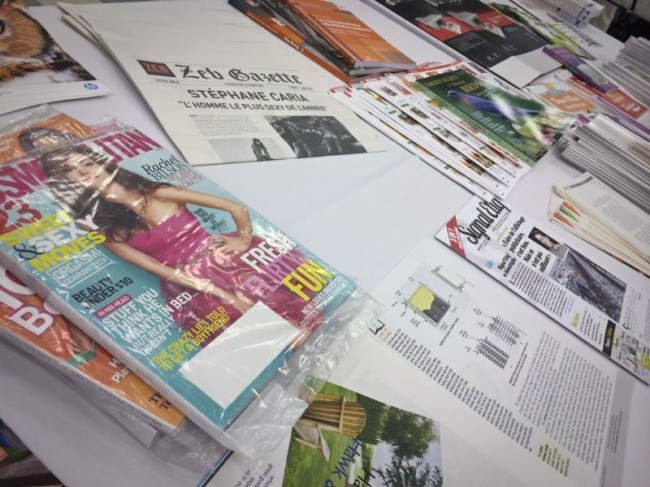
Various materials can be printed on the HP Color Inkjet Web Press, including magazines, periodicals, newspapers and booklets.
The sky’s the limit for digital inkjet presses, and it was fun to see one running up close and personal. I can see why more and more companies are bringing these larger machines online and jumping into a more flexible, adaptable system for publishing. As HP rolls out more and more innovation on the high end, we’re also seeing gains in the enterprise and workgroup lines. After all, the needs of a high speed digital production clients is what ultimately led to innovations like the PageWide technology found in the new
Technical Specifications
- Throughput (T400 1): up to 400 ft/min (122 m/min)
- Throughput (T400 2): up to 600 ft/min (183 m/min);
- Throughput (T410): mono up to 800 ft/min (244 m/min)
- Media Handling: Tight web continuous roll feed
- Paper width: 16 – 42 inches (406 to 1,067 mm)
- Weight: 60 – 350 gsm, 40-lb text to 130-lb cover
- Media types: Wide range of standard uncoated offset media and inkjet-optimized coated media
- Print technology: HP Thermal Inkjet
- Native resolution: 1200 nozzles per inch
- Ink type: Water-based HP pigment inks and Bonding Agent
- Ink colors: CMYK
- Printable width: Up to 41.75 inches (1060.4 mm)
- Printable frame length: from 11 to 72 inches (279.4 to 1828.8 mm)
- Duty cycle: 100 million letter-sized four-color images per month at 400 feet (122 meters) per minute; 140 million letter-sized four-color images per month at 600 feet (183 meters) per minute; 175 million mono letter-sized images per month at 800 feet (244 meters) per-minute
- Dimensions (W x L x H): 174 x 822 x 117 in (4.4 x 20.9 x 3 m)
- Operating environment Press operating temperature range: Optimal 59 to 86º F (15 to 30º C)
- Electrical voltage: 400V to 480V, 3 phase
- Power consumption (typical during operation): 176 kW
- Printheads: HP printheads (separate printheads for CMYK colors and Bonding Agent)
- Ink supply: HP 200-liter pigment ink containers (separate containers for each color and Bonding Agent)
- Servicing: HP 10-pack Web Wipe Cassette
Configuration options available to address specific printing requirements:
- MICR option: 11 HP MICR printhead; HP 3-liter MICR ink
- Dryer capacity
- Color Calibration
- Unwind and rewind units
- Zero-Speed Splicer, Automatic Turret Rewinder
- Paper handling options 350 gsm option
- Motorized Threader Option
- Warranty: Six-month limited warranty
For more information, feel free to check out the HP Press website
 CopierGuide Copier and Multifunction Printer Leases and Reviews
CopierGuide Copier and Multifunction Printer Leases and Reviews

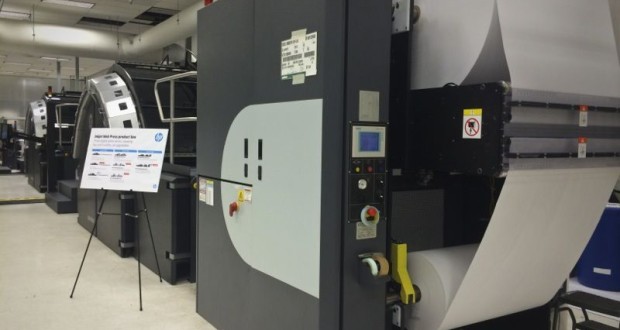
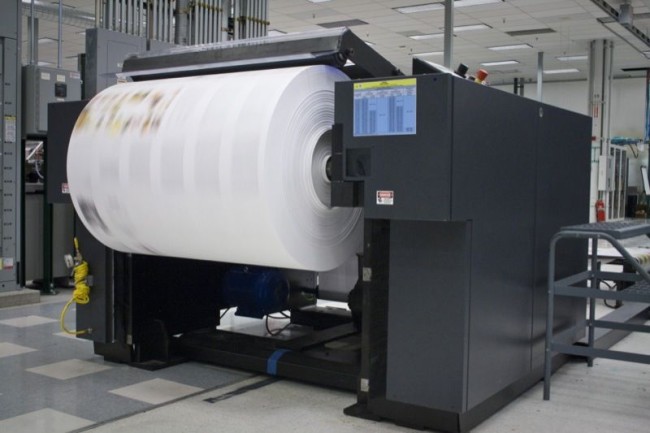
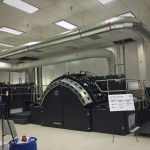
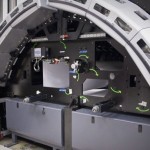
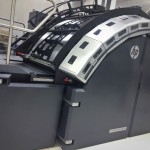
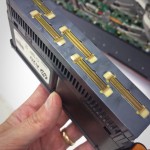
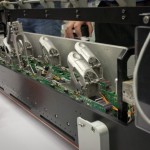
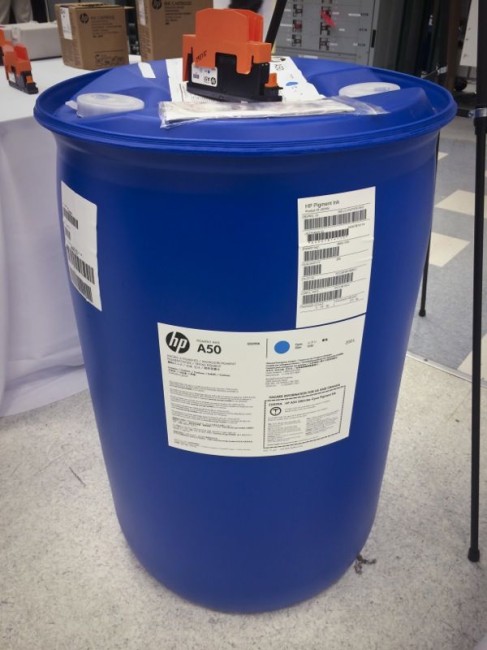
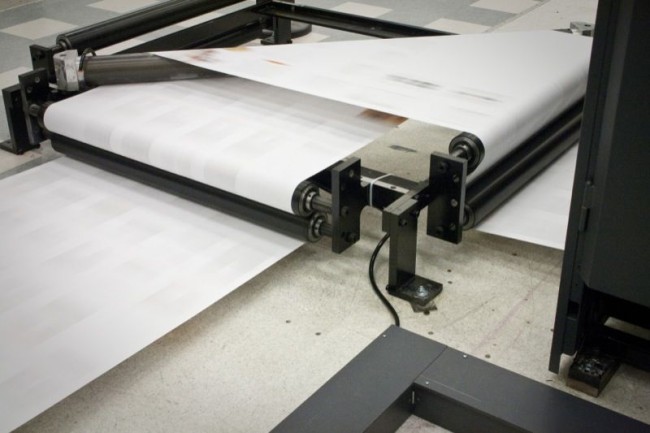

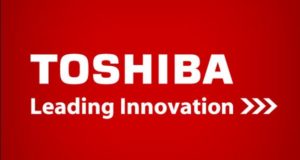
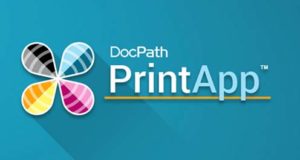
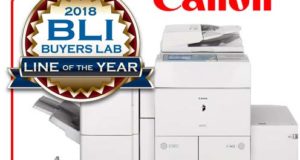
This new technology is great. However, as an old web offset printer, I must point out that calling such machines “PRESSES” is somewhat wrong. The word press, used to define a printing installation based on one of the classic printing systems (ofset, letterpress/flexo, or gravure), refers to the necessary printing pressure, that is exerted between two cylinders or a cylinder and a flatbed. This pressure is needed in order to transfer the ink from the plate/ clichee or blanket cylinder to the printed material (usually paper). Initially, when printing was invented, the printing machines used were actual screw presses. As an inkjet printer does not need pressure in order to transfer ink to paper, it is somewhat improper to call these machines presses. Also, while 800 ft/min web speed may seem impressive, such a speed is currently normal for SHEETFED ofset presses, while web ofset presses normally run at about 2000-2400 ft/min in full colour. Thank you.